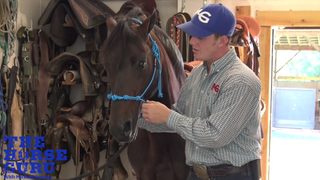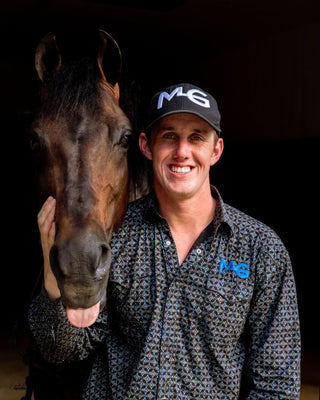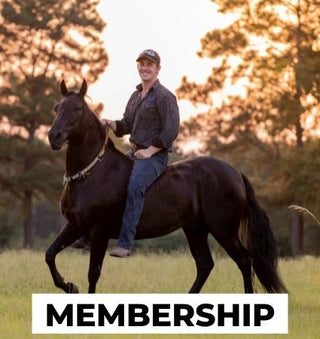Watch the Video Here or continue reading below!
One of the defining aspects of the MG Horsemanship system is that it allows riders to train their horses directly from the saddle using a halter. Unlike traditional methods, this system is designed for clear communication and effective training without the use of a bridle. Michael Gascon has traveled across the world, working with horses in various countries, and has never seen another system quite like this.
Understanding the MG Halter Design
What sets the MG Halter apart from others on the market is an additional knot at the top of the halter. This unique feature plays a crucial role in training by applying pressure to the horse’s nose when stopping or backing up. This pressure encourages the horse to respond quickly and willingly, making training smoother and more effective.
Rein Placement: The Key to Effective Communication
Starting Position
When attaching the reins, it’s best to begin in the middle of the halter. This position provides a balanced amount of pressure, allowing the horse to flex and stop without excessive force.
Adjusting for Responsiveness
If the horse responds well, the reins can be lowered, reducing the pressure applied. However, if the horse is resistant or unresponsive, raising the rein placement higher on the halter increases the torque and leverage, making it easier to get the desired response.
The Spanish Influence
During a month-long study at the School of Equestrian Art in Spain, Michael Gascon observed how Spaniards trained their powerful Andalusian horses. They used a metal noseband with rein attachments in the center, leveraging additional torque for better control. Applying this concept to the MG Halter, Gascon discovered that moving the rein attachment higher up significantly increases pressure per square inch, making it easier to gain the horse’s attention and compliance.
The Importance of Light Communication
Horses respond best to clear, consistent communication. When a rider struggles to control a horse using brute strength, frustration can build, leading to ineffective training. By using strategic rein placement on the MG Halter, riders can maintain a light touch while achieving better results. This helps keep both the rider and the horse calm, creating a more positive and productive training experience.
Finding the Right Balance
Increasing Pressure When Needed
If a horse is stiff or resistant, moving the rein attachment higher will create more pressure, making it easier to guide the horse.
Reducing Pressure for a Softer Response
Once the horse becomes more responsive, lowering the rein attachment will reduce the amount of force applied, allowing for lighter and more refined communication.
The Goal: A Willing Partner
The ultimate objective is to start with as much pressure as necessary and reduce it as the horse learns to respond. This principle applies to all aspects of training, including flexing, stopping, turning, and spinning. Horses naturally understand and appreciate this form of clear and consistent communication.
Why Horses Love the MG Halter
Unlike traditional bridles, which can cause confusion and discomfort, the MG Halter provides simple, direct pressure that horses instinctively understand. This natural horsemanship approach fosters trust and cooperation between horse and rider, leading to better training outcomes.









